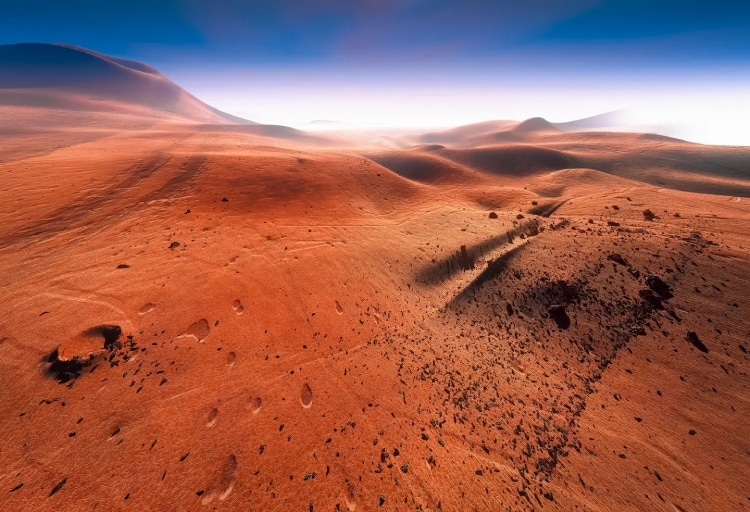Terraforming will be essential if Mars is to be made suitable for human life
Wed 05 Jan 2022
After 40 years with NASA and three years as its chief scientist, Jim Green has retired from the agency.
Green, who joined NASA in 1980 spent 12 years as the director of the agency’s planetary science division and helped it complete tasks like understanding Earth’s magnetic field and searching for life on Mars.
This background has led to the development of a theory for how Mars could be terraformed, which would make it habitable for human life and allow us to do things like grow plants on the planet.
One of the key things that allow Earth to support human life is the magnetic fields around it, which help the atmosphere remain stable and not be obliterated by solar winds.
Mars once had similar magnetic fields, which would have made it a much warmer and wetter planet, but now they barely exist.
That’s left the Red Planet very cold and scientists believe it is unable to currently host life.
But, if a functioning magnetosphere could be returned to the planet, Green believes it may be able to develop a thicker atmosphere again, which would give it a warmer climate and allow it to hold water on its surface.
Before his retirement, in a talk at the NASA Planetary Science Vision 2050 Workshop at the agency’s headquarters, Green presented simulations and models to support early thinking for how the field may be re-constituted, making the planet more accessible for human explorations and even, eventually, human communities.
Essentially, a magnetic shield would need to be created, supported by a closed electric circuit that would generate an artificial magnetic field.
“The solar system is ours, let’s take it. And that, of course, includes Mars. But for humans to be able to explore Mars, together with us doing science, we need a better environment,” Green told the workshop.
That’s very strong energy declaring we can just ‘colonise the solar system’, but if we eventually need to move to Mars then I guess we’ll be pretty happy they can do it.
Green was wary to call the process ‘terraforming’, which usually involves mass-scale changing of an environment, including topography and ecosystem, but he did say this would put us on the right track.
“My understanding of terraforming is the deliberate addition, by humans, of directly adding gases to the atmosphere on a planetary scale. I may be splitting hairs here, but nothing is introduced to the atmosphere in my simulations that Mars doesn’t create itself. In effect, this concept simply accelerates a natural process that would most likely occur over a much longer period of time,” he said.
We also shouldn’t be packing our bags based entirely on the potential for a new atmosphere for Mars, as the process could take up to 700 million years, and it’s something NASA is still working on the exact physics for.
But Green says the fact scientists now understand what happened to Mars and its atmosphere means they could in theory return it.
“If we significantly reduce the stripping, a new, higher pressure atmosphere will evolve over time,” he said.
“The increase in pressure causes an increase in temperature. We have not calculated exactly what the new equilibrium will be and how long it will take.”
Source: Agencies

 Apr 23 2024
Apr 23 2024












